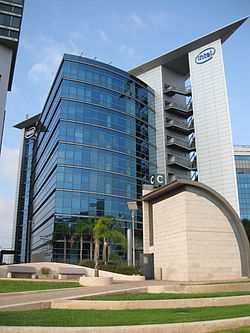click to dowload our latest edition
CLICK HERE TO SUBSCRIBE TO OUR NEWSLETTER


Published
7 years agoon
By
adminSTEVEN KRAWITZ
The natural setting, the light and the spiritual perfection, all contribute to Jerusalem’s beauty. Today the built environment also adds to the unique beauty of the city.
The original master-buildings in Jerusalem were the First and Second Temples, expressing in stone the Nation of Israel’s relationship with the G-d of Israel. The architecture and architects, have continued to add to the long tradition of dialogues, and debates, representing the very history and ideological battles of the modern state through stone, steel, glass and cement.
If two Jews represent three ideas, as the old joke goes, then it is also very true that Jerusalem’s buildings represent at least one and a half opinions each.
Three seminal Jerusalem architects and their contribution to the city’s architectural legacy, was the subject of an eye-opening talk given by the top Johannesburg architect Nina Cohen at the Academy recently. Cohen, who is currently overseeing the construction of the Mpumalanga University, is a passionate guide through the layers of Israeli architecture.
She focused on three architects: Erich Mendelssohn, a German émigré, Austin St Barbe Harrison an architect in the British Colonial Service, and Spyro Houris, a Greek Orthodox Alexandrian.
She gave her insights in a talk based on Adina Hoffman’s recently published book, Till We Have Built Jerusalem: Architects of a New City.
Cohen emphasised that modern Jerusalem needs to be seen as one half of a fundamental argument within the Zionist enterprise, with Tel Aviv as the other half.
The architects of Tel Aviv, Jews who had fled Europe where they had identified with the Modernist movement, wanted their city to express a break with the anti-Semitism of the Jewish experience in Europe.
For them, Tel Aviv and its buildings were the symbols of the transition from centuries of being an oppressed minority to the promise of literally constructing an autonomous self.
In the early years of the city, a fascination with the Orient could be found in Tel Aviv. However, from the early 1930s, any attempt to co-opt local indigenous and orientalist forms into buildings proved untenable, owing to the tensions between Zionists and Arabs, allowing Modernist principles to become the very foundations of Tel Aviv architecture.
For the Zionists and Socialists, architecture was no longer to be an extension of a pre-existing culture, but a new expression of the Zionist movement. To this day Tel Aviv has an international feel, a modern-prototype city that happens to be situated in Israel, but not reflecting the particularities of its context or environment.
However, decisions of remarkable men reflect a very different architectural philosophy and built environment in Jerusalem, according to Cohen
In her view, probably the single most important contributor to modern Jerusalem’s aesthetics, was not an architect. The military Governor Ronald Storrs, who arrived in late 1917, made the city’s physical conservation a top priority.
Comparing himself to a “beneficent despot”, he issued a ban on any building material other than stone, which over the next century would result in the architecture of the expanded municipal boundaries of the city unified by the visual coherence of Jerusalem stone.
In terms of the architectural input, she said, German architect Mendelssohn designed the Hadassah Hospital on Mount Scopus; the headquarters for the Anglo-Palestine Bank; and the Schocken Villa and Library, built for Salman Schocken, the German publishing magnate.
He was widely admired for his thumbnail sketches, which captured the essence of each of his projects, Cohen says.
She explains that Mendelssohn saw architecture as part of the wider social and political vision, responding to landscape, climate and both Jewish and Arab cultures. He believed firmly that Palestine “is in the Orient and of the Orient”.
He was a passionate Zionist and saw Jerusalem as the centre of the Jewish Renaissance. He wanted his buildings to draw all these threads together and express them in stone.
Whereas Tel Aviv’s architecture became the embodiment of Herzl’s political Zionism as expressed by the Socialist leadership, Mendelssohn’s was the expression of the cultural Zionism of Martin Buber and Ahad Ha’Am.
Mendelssohn’s idealism extended beyond architecture, employing Jews and Arabs to work on construction sites with an ultimate goal of creating a new Semitic commonwealth. His vision was not popular.
During the construction of the Haddasah Hospital, Revisionist Zionists loyal to Ze-ev Jabotinsky, violently attacked the building site because the labourers Mendelssohn had hired, were from the Socialist left. In 1941 Mendelssohn left Jerusalem for New York, embittered and defeated.
Austin St Barbe Harrison, was the official chief British architect of Mandate Palestine. He had a traditional training in Britain, and like Mendelssohn, his approach was to combine modern and local elements in their most simplified forms.
He designed most of the public buildings the British left behind, including the High Commissioner’s residence, Government House, the Government printing press; the Rockefeller Museum (Palestine Archaeological Museum); and the Jerusalem Central Post Office.
St Barbe Harrison spent 15 years and one day in Jerusalem, precisely the time necessary to claim his government pension and then fled in secret, abandoning most of his possessions.
Spiro Houris, a Greek Orthodox from Alexandra, moved to Jerusalem before the First World War and built houses for Jews, Arabs and Greeks, adding more than a dozen buildings to the city.
Houris lived during a time when identities in Jerusalem were not rigid and could be multiple.
His buildings encapsulate the Oriental and express the local cultures. He worked with an Armenian ceramist, David Ohannessian, who had survived the Armenian Genocide and had been brought to Jerusalem to retile the Dome of the Al-Aqsa Mosque.
Ohannessian’s legacy lives on in the city through the ubiquitous blue tiles of Jerusalem.
Cohen’s depth of research about the personalities who contributed to Jerusalem’s buildings, make her the ideal guide for the simple pleasure of strolling down Jaffa Street, identifying the dialogues and arguments each structure contributes to the golden city..
